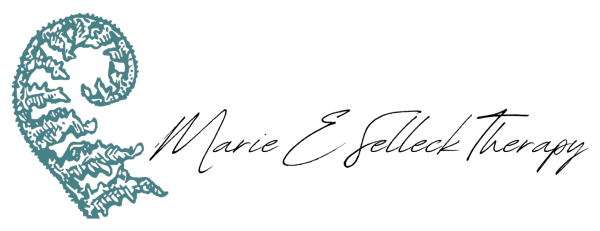Why Somatic Therapy Is So Effective for Healing Trauma
When trauma gets stuck in the body, we need approaches that go beyond just talking. As a therapist who works with trauma daily, I've seen firsthand how somatic therapy creates breakthroughs where traditional talk therapy often hits walls. Let's explore why body-based approaches are so powerful for trauma healing.
The Body Keeps the Score
Bessel van der Kolk wrote the book The Body Keeps The Score where he talks about how trauma isn't just stored in our memories—it lives in our physical bodies. When something traumatic happens, our nervous system goes into survival mode. Sometimes, that stress response gets trapped in our tissues, muscles, and nervous system.
This is why many trauma survivors experience:
Unexplained physical pain
Tension in specific body areas
Feeling jumpy or on edge
Difficulty relaxing
Digestive problems
Sleep disturbances
Talk therapy alone often can't reach these body-based symptoms. This is where somatic therapy shines.
Instead of trying to reason with trauma, somatic therapy and Brainspotting speak the language your body understands.
How Somatic Therapy Works
Somatic therapy uses the mind-body connection to release trauma stored in the body. Rather than just talking about painful experiences, you learn to:
Notice body sensations
Track physical responses
Release tension patterns
Complete interrupted survival responses
Restore the nervous system to balance
The goal isn't just understanding your trauma intellectually—it's physically releasing it from your body.
Brainspotting: A Powerful Somatic Tool
One effective somatic approach I use with clients is brainspotting. Developed by Dr. David Grand, brainspotting is based on the idea that "where you look affects how you feel."
In brainspotting, we find specific eye positions ("brainspots") that connect to the physiology of your trauma. When you hold your gaze on these spots while processing difficult emotions, it allows your brain to access and heal trauma stored in your subcortical brain—the part that controls automatic processes and emotions.
Here's how it works:
I help you find a brainspot by guiding your eye movements
You focus on that spot while noticing body sensations
This eye position unlocks access to trauma stored in your nervous system
Your brain begins processing and releasing the stuck trauma
Brainspotting bypasses the thinking brain and works directly with the body's wisdom. This makes it incredibly effective for trauma that words can't reach.
Breaking Free from Shame and Guilt
Many trauma survivors struggle with intense shame and guilt. These emotions are not just thoughts—they manifest physically as:
Heaviness in the chest
Hunched posture
Tight throat
Feeling small or collapsed
Avoidance of eye contact
Through somatic work, we can directly address these physical patterns. As your body releases the physical imprints of shame, the emotional burden lightens too.
Why It Works When Other Approaches Fail
Traditional therapy relies heavily on talking and thinking. But trauma affects the primitive brain areas that don't process language well. When you're triggered, your thinking brain (prefrontal cortex) goes offline, while your survival brain takes over.
Somatic therapy works directly with those deeper brain structures. Instead of trying to reason with trauma, it speaks the language your body understands.
The Bottom Line
Healing trauma requires more than just understanding it—you need to feel it shift in your body. Somatic Trauma Therapy provides a direct pathway to release trauma where it's stored: in your nervous system, muscles, and tissues.
As someone who's witnessed countless transformations through somatic work, I can confidently say this: when we bring the body into the healing process, change happens on a deeper level. The shame, guilt, and fear that once seemed permanent begin to dissolve, making room for new possibilities.
If you've been struggling with trauma despite years of talk therapy, a somatic approach like Brainspotting might be the missing piece. Your body has an innate wisdom and capacity for healing—somatic therapy simply helps you access it.


